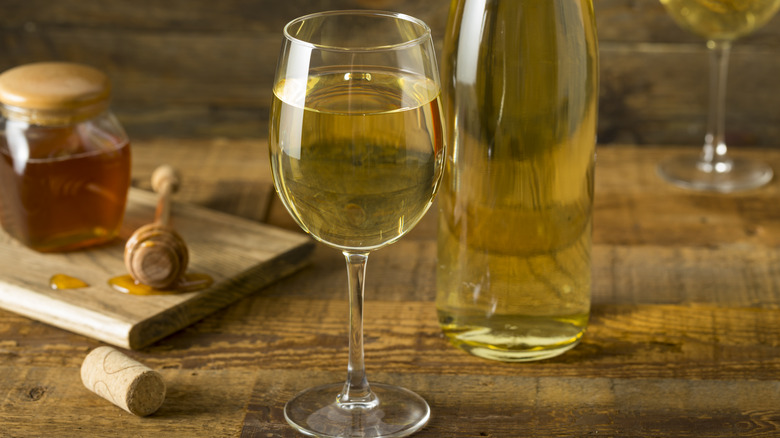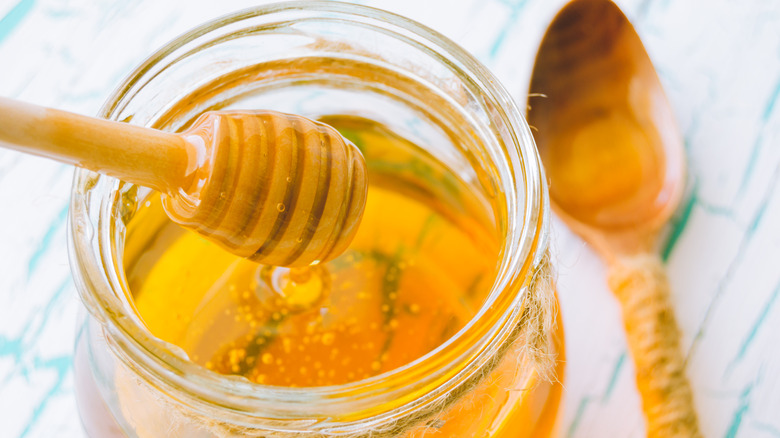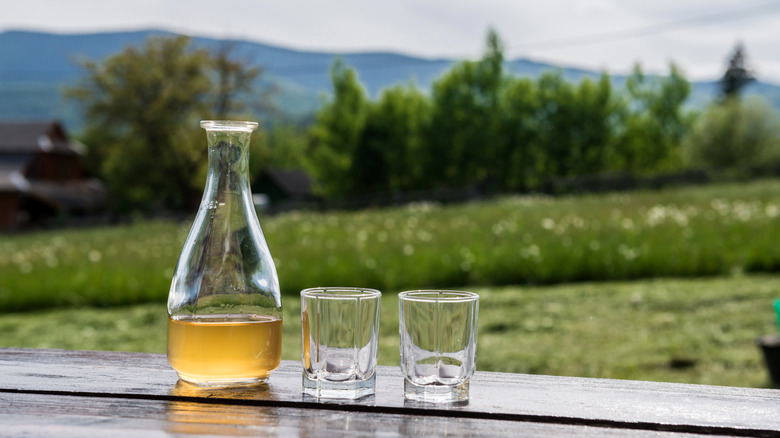Is Mead Closer To Wine Or Beer?
Mead's storied past goes back thousands of years. An important element of many Norse legends, it is even the focus of a story in which two gods agreed to peace and spit in a vat to seal the deal. To preserve the energy of the pact, the spit is used to create a wise man named Kvasir, who is later killed by dwarves. The dwarves drain his blood and mix it with honey, creating the Mead of Poetry, which grants knowledge and the power to compose great poetry to the drinker. In mythical Valhalla, mead flows without end.
"Harry Potter" and "Game of Thrones" reference mead too, and may have been part of why mead-making surged in the U.S., with reports from the American Mead Makers Association saying that the number of commercial meaderies rose from 30 in 2003 to 300 in 2016. "There are about 480 meaderies in the U.S. at last check, which is a few months ago," AMMA President Greg Heller-LaBelle told us via email.
The fermented libation was long thought to be the world's oldest alcoholic beverage. The claim was made on the basis of evidence detected in 9,000-year-old jars from Hunan China. More recently, even older evidence of beer has surfaced from some 13,000 years ago in Israel, knocking mead off the throne of pre-historical booze, though Heller-LaBelle maintains "beer is definitely later," due to the way he says mead can spontaneously occur in nature. Clearly, this golden elixir has a lot to tell us about the world, but what exactly is it?
Honey on a spoon
Known by its sometimes alias, honey wine, mead can be mistaken for a fermented beverage made of grapes, especially since some meads contain fruit. Not everyone applies the term honey wine to mead, however.
Made of honey diluted with water and mingled with yeast, mead is so designated as long as the majority of its fermentable sugars come from honey. This distinguishes mead from beer, which gets its fermentable sugar from grains and sometimes hops. It also sets mead apart from wine, which ferments from grapes.
Like beer and wine, different types of mead are made from the addition of different ingredients or differing strengths. A weaker mead, around 6% alcohol by volume, is known as a hydromel. Sack meads, or fortified meads, are much higher in ABV, up to the 18% mark. Melomels are meads with added fruit or fruit flavorings and metheglins are spiced meads. A braggot is a mix of mead and beer.
So what exactly is mead closest to, beer or wine?
Live, laugh, mead
Like wine, mead can be still or sparkling, and sweet or dry. Also like wine, mead uses wine and champagne yeasts to accelerate fermentation. Mead is gluten free, where beer is not, and wine is (usually). Mead is also not boiled, unlike beer. Also unlike beer, mead takes a fair spell to ferment on the scale of months to like wine, years. Make that weeks to months for beer to ferment.
Overall, mead shares a few more similarities with wine than beer, but it is certainly a world apart. The sweetness that can be a characteristic of mead is also close to the flavor possibilities of wine, with mead gaining that extra honey flavor through back-sweetening, or adding honey once it has already fermented.
The global beverage market value for mead, beer, and wine has been reported at around $487M, $750B, and $339B, respectively, in the years 2020 or 2021. But with local recipes going back hundreds and thousands of years in areas around the world, from Ethiopia's Tej to Scandanavian Viking Blood, mead has a wide home turf from which to grow in popularity.


